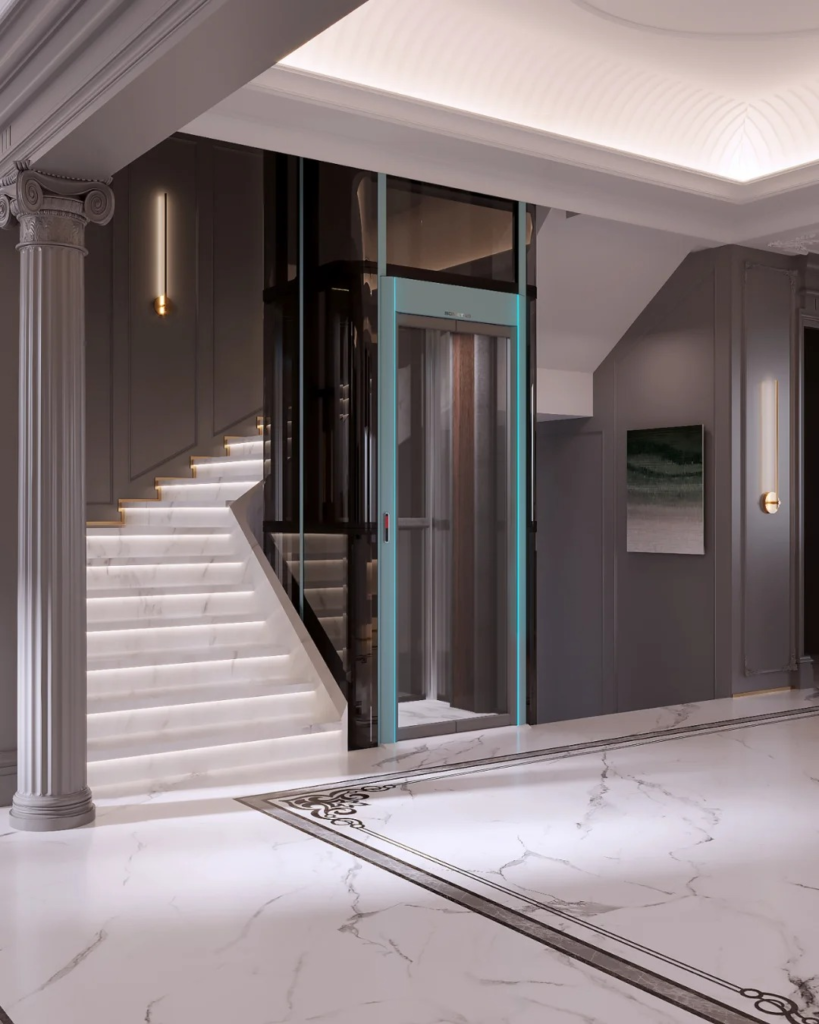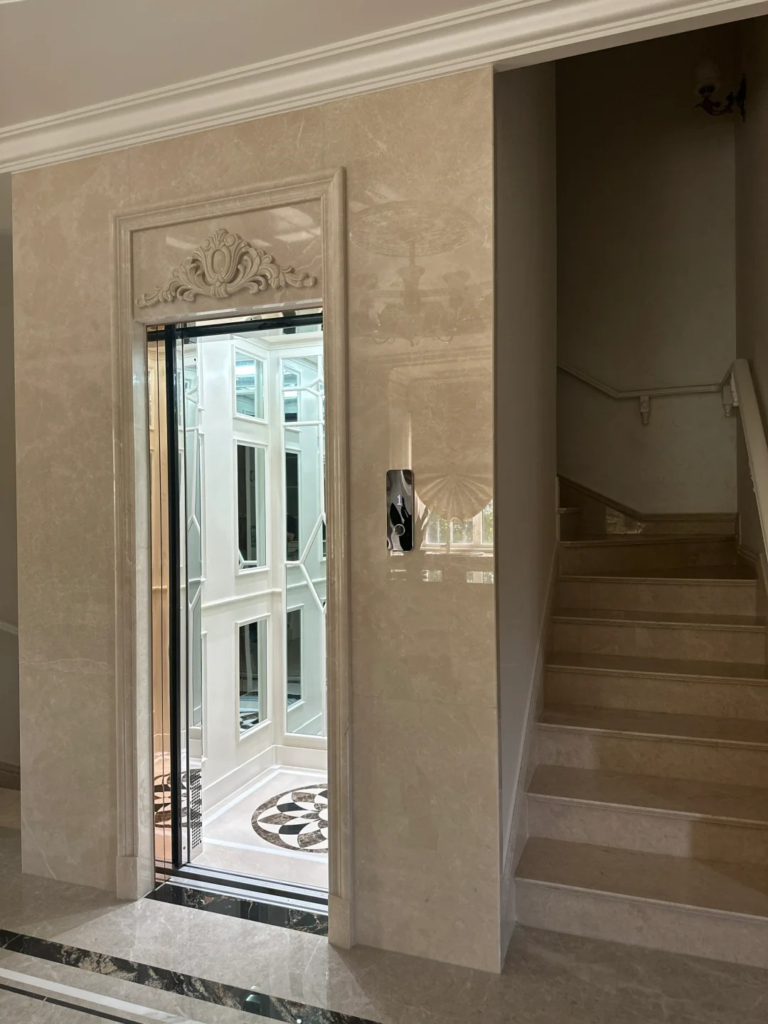The home elevator lift, as a pivotal solution for vertical mobility in modern residences, is reshaping global living standards through enhanced convenience and intelligence. From luxury villas in North America to compact apartments in Asia, its technological innovations and market demands are driving the industry toward efficiency, sustainability, and personalization.

Technological Innovation: Intelligence and Energy Efficiency
The evolution of home elevator lifts centers on smart controls and energy optimization. IoT technology enables real-time monitoring, predictive maintenance, and remote diagnostics, significantly reducing downtime and costs. For instance, Mitsubishi Electric’s IoT system cuts fault response time by 40% and energy consumption by 30% through regenerative energy. Chinese manufacturers like GreatWall utilize AC variable frequency control to lower energy use by 30%, paired with smart sensors for fault detection.

AI integration further elevates user experience. Voice assistants with natural language processing (NLP) recognize family members’ needs—for example, adjusting operation modes or syncing with smart home devices (e.g., activating entryway lights upon arrival). Biometric technologies (e.g., facial recognition) enhance security by preventing unauthorized access.
Regional Dynamics: Demand-Driven Adaptation
Global home elevator lift markets exhibit distinct regional traits. North America prioritizes accessibility, with wheelchair lifts and LULA platforms accounting for 40% of sales to meet ADA compliance. Europe focuses on energy efficiency; Germany’s Stiltz achieves a 50% energy reduction via EU A++ certification.
Asia-Pacific shows polarization: China dominates Southeast Asia with cost-effective models (around $12,000), while Japan emphasizes compact lifts (250kg capacity) for aging populations. Divergent standards (e.g., EU’s EN81-20 vs. China’s GB) complicate global supply chains, necessitating modular designs for rapid adaptation.
Sustainability: Green Transformation Under Carbon Neutrality
Amid carbon neutrality goals, home elevator lifts are undergoing eco-friendly transformations. Chinese manufacturers halve carbon emissions via solar power, recycled materials, and LED lighting6. Europe explores lifecycle sustainability—the EU’s New Battery Regulation mandates 90% recyclability for elevator batteries, driving modular designs.
Smart energy management systems optimize resource use. For example, elevators can adjust operation schedules based on electricity pricing or charge storage devices during off-peak hours, reducing both costs and carbon footprints.
Challenges and Future Trends: Security, Interconnectivity, and Convergence
Despite growth potential, home elevator lifts face critical challenges:
Cybersecurity Risks: Connected elevators are vulnerable to data breaches. A 2024 Seoul incident accelerated blockchain encryption adoption.
User Adoption Barriers: Consumers require education on smart features. VR demonstrations of installation effects help lower decision-making barriers.

Future trends will focus on cross-industry convergence. Digital twin technology can simulate energy use and maintenance strategies—London Metro reduced costs by 18% using this approach. Additionally, smart textiles (e.g., self-cleaning fabrics and temperature-regulating materials) may redefine cabin design for comfort and functionality.
The home elevator lift’s global evolution reflects both technological advancement and a shift toward intelligent, sustainable living. From Scandinavian minimalism to Chinese smart manufacturing, its innovation trajectory demonstrates how vertical mobility integrates into modern lifestyles. The synergy between green technologies and digital ecosystems will propel the industry toward higher-dimensional value creation.





